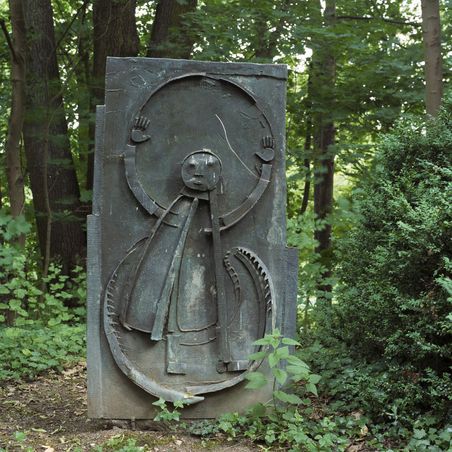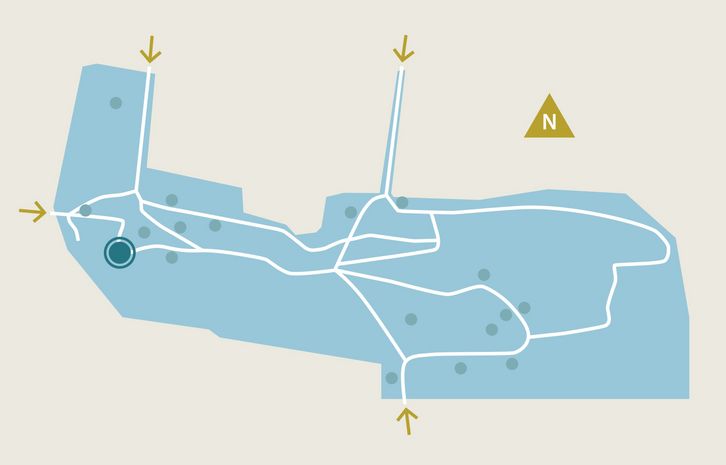Jonah
1971 | Cat. No. 224 | Bronze | Height 155 cm | Width 91 cm
Inscription on the relief plate:
WANDERER YOU / WANT THE CHANGE – BE INSPIRED BY THE FLAME – WHERE EVERYTHING SHINES AS IT DISAPPEARS / RILKE

In the relief Jonah, Kirchner focuses on the prophet Jonah. In the Book of Jonah in the Old Testament, God orders him to proclaim God’s judgement to the city of Nineveh and its inhabitants, and when Jonah tries to escape his fate on a ship, God unleashes a storm. Jonah is thrown into the sea to appease God and is devoured by a whale. After three days and nights of praying and repenting, the whale spits him out and Jonah finally fulfils his God-given task. Kirchner defines the figure of Jonah sketchily and freely with a circular head and a triangular torso, which has similarities to the body shape of Abraham the Wanderer. Jonah’s body is framed by two circular forms that symbolise the circles of heaven and earth. The upper circle is formed by Jonah’s arms, whilst the lower circle is made up of teeth and suggests the whale’s mouth from the biblical story. Jonah’s lower body is still in the whale’s mouth, while his upper body is already striving towards the divine. The body’s dichotomy represents the dualism of body and soul. The raised arms show Jonah’s salvation through his determination to follow the call of God. The division of the bronze sculpture into two parts also reveals the significance of the motif of change, which Kirchner refers to in a poem by Rilke in the inscription on the base. Since the 1970s, and especially since the creation of the relief Jonah, he has inscribed the bases of his sculptures with his own poems, texts, and quotations from Hölderlin or Rilke. They document Kirchner’s sources of inspiration and his desire to artistically capture the literary inspiration for his ideas.
Audio guide
Location of the sculpture
